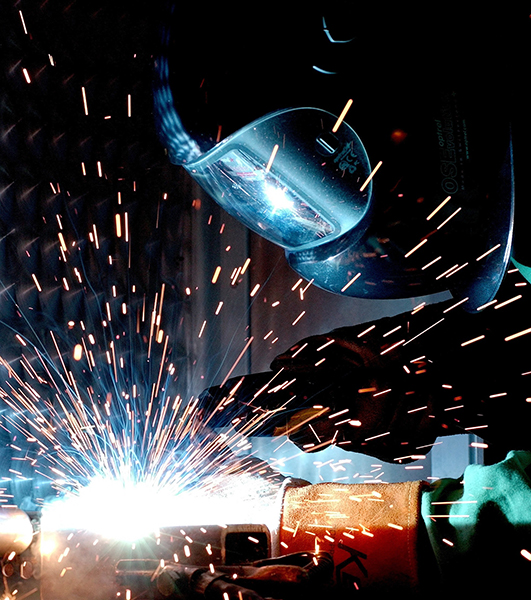AI is a rapidly growing and far reaching field of technology — and it will soon play a fundamental part in modern manufacturing.
Artificial intelligence is a hot topic these days, and is becoming a growing part of each industry. In particular, a subcategory of artificial intelligence, called computer vision, is an advantageous tool in the manufacturing industry. Computer vision processes occur by using digital images from cameras and videos and deep learning models, where machines can accurately identify and classify objects — and then react to what they “see.”
While it has been used for decades, computer vision has mostly been known by its previous iteration, machine vision. Machine vision is the older, slightly less refined version of computer vision. While it accurately performs visual perception and detection tasks based on algorithms, it has to be fine-tuned by humans. The downfall of machine vision is its fragile nature. Any slight environmental changes such as lighting or distance negatively impacts the process.

Machine vision only zeroes in on the most important part of the image relative to the task at hand. Because of this, machine learning is usually used for fast decisions, and designed with very specific applications in mind.
Computer vision is able to extract as much data as possible about an object, and is used for tasks with bigger amounts of data. This is why it is a perfect fit for the manufacturing industry, where multiple tasks are occurring simultaneously, and there could be a multitude of images that need data extracted.
From the hiring process to the plant floor, manufacturing could benefit from computer vision. Most likely, a person thinks of a robot moving boxes around a long, dark warehouse when they think of computer vision automation, but there is so much more that is possible.
On the human resource and administrative side of manufacturing, payroll and onboarding could both be accomplished with automated document processing. This could be taken further by processing invoices, and, particularly huge for manufacturers, inventory management. Computer vision can be used to help keep stock, maintain inventory, and automate and notify employees if stock for manufacturing is below what is required. In larger warehouses, locating stock can be challenging, but with a computer vision system, combined with barcode data, products could be easily located.
On the manufacturing floor, computer vision can be used for process control and quality control. This can include packaging standards, such as counting items before they are packed, a task which often results in errors when done manually. In addition to this, computer vision can inspect both the individual items and the packaging itself for damage. Modern cameras are able to detect light outside of the visible light spectrum, so the ability to see ultraviolet and infrared light means computer vision systems could use newer techniques to detect defects in products or packaging that are not immediately visible to the human eye. This is especially useful in manufacturing when dealing with products that could defects on a micro-scale, such as the wrong threading.
It is reported that close to 70% of Tesla’s manufacturing process is automated. A computer vision system guides the assembly process precisely, based on 3D model designs generated by software. The computer vision system constantly monitors and guides both the employees in the assembly line and guides the robotic arms.
Another important aspect of computer vision in manufacturing is safety and security standards. Manufacturing processes can happen at extreme temperatures, or in specific environments, and due to that, it is not uncommon for material to degrade or corrode. When equipment fails, the manufacturing process comes to a grinding halt. Manufacturers could leverage computer vision as a predictive maintenance system to prevent breaks in their manufacturing process, or possible injuries due to equipment failures. By setting their own standard metrics, manufacturers could use computer vision to constantly monitor the equipment. If there are any deviations from the metrics, the computer vision system can notify the proper employee, to carry out proactive maintenance and avoid breaks in the manufacturing process.
Although there are cameras throughout warehouses and manufacturing floors, and employees monitoring for safety standards, accidents still happen. With computer vision, an employee would not have to sit in front of a camera constantly monitoring videos. The computer vision system could detect the images of the employees immediately from entry, and monitor their locations, and ensure they adhere to safety and security standards. Computer vision can provide area sensors and light curtains as safety components, along with detecting anomalies, or alerting when an employee is entering a high-risk area. Computer vision could also monitor manufacturing floors for proper PPE use, and monitor use of heavy machinery.
While it is not moving as quickly as in other industries, computer vision will be very beneficial to the manufacturing industry. Not only will it save time and money, but most importantly, it could provide a safer and more secure working environment for all employees.
About the Author:
Sergio Suarez Jr. is the founder and CEO of TackleAI, the leading AI-powered dynamic data processing platform. TackleAI utilizes a built-from-scratch AI program to instantly analyze, extract and file unstructured document data for clients in healthcare, government, business and finance.
In this episode, I sat down with Beejan Giga, Director | Partner and Caleb Emerson, Senior Results Manager at Carpedia International. We discussed the insights behind their recent Industry Today article, “Thinking Three Moves Ahead” and together we explored how manufacturers can plan more strategically, align with their suppliers, and build the operational discipline needed to support intentional, sustainable growth. It was a conversation packed with practical perspectives on navigating a fast-changing industry landscape.